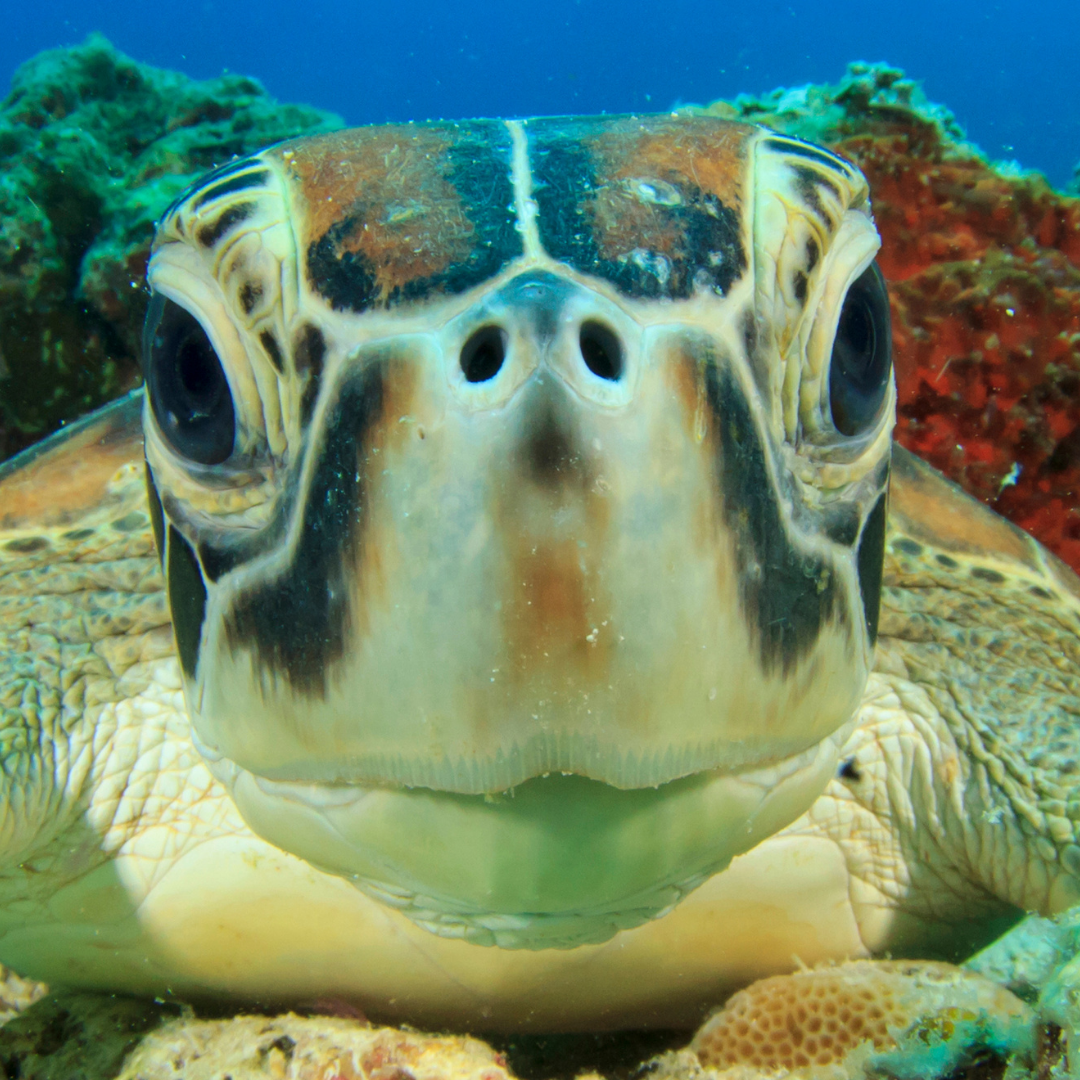
This children’s article, From endangered to thriving: the green turtle’s story, has been written for native English speakers and learners of English as a second or foreign language. It can help children build vocabulary, learn about animal conservation, and understand how people can protect endangered species. Written by Mark Pulley, a teacher and writer who creates fun and informative news articles for English learners.
From endangered to safe again
The green sea turtle, once in serious danger of disappearing, has made a huge comeback! In the 1980s, there were so few left that scientists added them to the list of endangered species, meaning that they were at risk of extinction.
Now, after decades of hard work, green turtle numbers have grown so much that they are no longer on the endangered list. In the latest update of the Red List of endangered species by the International Union for Conservation of Nature (IUCN), green turtles are now listed as “Least Concern.”
Dr Nicolas Pilcher from the Marine Research Foundation in Malaysia said, “It just tells this great story of how people across the planet can come together to turn things around… and that is amazing.”
A long journey back
The success didn’t happen overnight. Around the world, small efforts added up to big change. In some places, volunteers guarded turtle nests on beaches so baby turtles could safely reach the sea. In others, local people learned new ways to protect turtles instead of hunting them for their meat, eggs, or shells.
Green turtles get their name not from the colour of their shells, but from the green fat inside their bodies, which is caused by their plant-filled diet!
How science is helping
Even with this good news, turtles still face dangers from fishing nets, plastic pollution, and climate change. To protect them, scientists have created ShellBank. It’s the world’s first global DNA database for sea turtles.
By safely taking small DNA samples from live turtles or shells, experts can discover exactly where each turtle came from. This helps conservationists track illegal trade and protect the most at-risk populations.
So far, more than 13,000 turtle DNA samples from over 50 countries have been added to the ShellBank system. The information has already helped reveal hidden populations of turtles in places like Indonesia and Papua New Guinea.
Hope for all sea turtles
Green turtles are not the only ones that need protection; six other sea turtle species still face serious threats. But the story of the green turtle shows what can happen when people around the world work together to help nature recover.
Sea turtles have been swimming in the world’s oceans for over 100 million years, long before dinosaurs disappeared. Thanks to modern science, community care, and global teamwork, they might continue swimming for millions more.
You can learn more about sea turtles and their conservation on the World Wildlife Fund (WWF) website.

Article vocabulary list
- Endangered – at serious risk of disappearing forever.
- Extinction – when a species completely dies out.
- Conservation – protecting nature, animals, or the environment.
- Ecosystem – a community of plants and animals that depend on each other.
- Pollution – harmful waste or chemicals that damage the environment.
- DNA – the chemical code inside every living thing that carries its genetic information.
- Illegal trade – buying or selling something against the law.
- Population – a group of animals of the same species living in one area.
- Habitat – the natural home of a plant or animal.
- Species – a group of living things that are similar and can reproduce together.
Comprehension questions
Just click the plus (+) to see the answer
1. What happened to the green sea turtle’s conservation status recently?
A) It became extinct
B) It changed from “Endangered” to “Least Concern”
C) It became “Critically Endangered”
Answer: B) It changed from “Endangered” to “Least Concern”
2. Why are green turtles called “green”?
A) Because their shells are green
B) Because they eat seaweed
C) Because their body fat is green from their plant diet
Answer: C) Because their body fat is green from their plant diet
3. What is ShellBank?
A) A new kind of turtle shelter
B) A DNA database to track and protect turtles
C) A sea turtle rescue boat
Answer: B) A DNA database to track and protect turtles
4. How long have sea turtles lived on Earth?
A) Around 10 million years
B) About 50 million years
C) Over 100 million years
Answer: C) Over 100 million years
5. What do scientists use turtle DNA for?
A) To decorate shells
B) To track their origins and protect populations
C) To teach turtles to swim faster
Answer: B) To track their origins and protect populations

Mark is a writer and EFL teacher from England with eight years’ experience. He’s passionate about travel, sport (especially football), animals, nature, and history, and enjoys helping children explore the world through language and learning.




